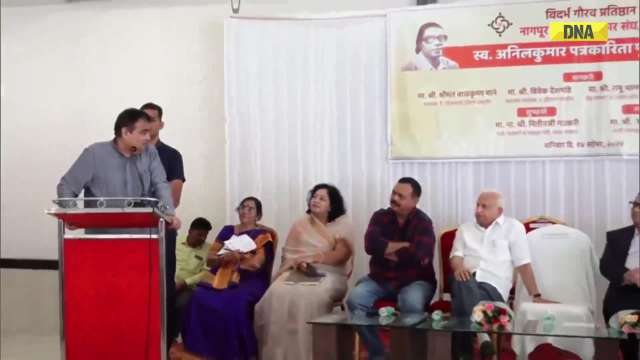Kumaresan has led initiatives to enhance workflow efficiency through the integration of AI-driven tools into no-code platforms.
In this insightful interview, Kumaresan Mudliar, a leading expert in business process automation, discusses the transformative role of Generative AI, no-code authoring tools, and unified system architectures in revolutionizing how organizations design and manage workflows. Kumaresan shares his vision for how these technologies can create more efficient, adaptable, and integrated business processes, enabling companies to respond swiftly to market demands and operational challenges.
At the forefront of enterprise software development, Kumaresan has led initiatives to enhance workflow efficiency through the integration of AI-driven tools into no-code platforms. His work includes the development of a next-generation intake management system that has streamlined business processes, reduced manual tasks, and improved overall user experience. By leveraging advanced architectures, he has also established a unified approach that optimizes process design and ensures consistency across all business functions.
Q1: No-code platforms are becoming increasingly popular. What makes them so essential in today’s business environment, and how do they contribute to business process automation?
Kumaresan Mudliar: No-code platforms are essential because they democratize the development of business process workflows, allowing people with little to no coding experience to create and manage complex processes. This accessibility accelerates innovation by enabling teams to rapidly prototype and deploy solutions without the traditional bottlenecks associated with software development.
In business process automation, no-code platforms allow organizations to quickly adapt to changing market conditions, streamline operations, and eliminate inefficiencies. The ability to automate routine tasks without the need for extensive coding expertise not only saves time but also reduces costs and frees up valuable resources to focus on more strategic initiatives.
Q2: How does Generative AI enhance the capabilities of these no-code platforms, particularly in the context of business process workflows?
Kumaresan Mudliar: Generative AI enhances no-code platforms by introducing a level of intelligence that allows for more sophisticated and adaptable workflows. For example, AI can analyze existing workflows, identify inefficiencies, and suggest optimizations automatically. It can also predict outcomes based on historical data, enabling businesses to make proactive adjustments to their processes.
In the context of business process workflows, this means that companies can achieve greater efficiency and responsiveness. Generative AI allows workflows to evolve dynamically as business needs change, ensuring that operations remain optimized without requiring constant manual intervention. This capability is particularly valuable in fast-paced industries where agility is key to maintaining a competitive edge.
Q3: You’ve worked on integrating AI-driven tools into workflow management systems. Can you share an example of how this has impacted a business’s operations?
Kumaresan Mudliar: Absolutely. One of the most impactful projects I’ve worked on involved integrating AI-driven tools into a large-scale intake management system. Before the integration, the organization faced challenges with manual data entry, process inconsistencies, and delays in approvals, which affected overall efficiency.
By incorporating AI into the system, we were able to automate data validation, streamline approval processes, and provide real-time insights to decision-makers. The result was a significant reduction in processing time—what once took days could now be completed in hours. This not only improved operational efficiency but also enhanced the user experience, leading to higher satisfaction among both employees and customers.
Q4: How do you see the role of advanced architectures like BPMN and DSL in creating unified SaaS platforms?
Kumaresan Mudliar: BPMN (Business Process Model and Notation) and DSL (Domain-Specific Language) are crucial for creating unified SaaS platforms because they provide a standardized way to model and manage complex processes across different business functions. BPMN offers a visual framework for designing processes, which helps in ensuring that all stakeholders have a clear understanding of the workflow. DSL, on the other hand, allows for customization specific to the business’s domain, ensuring that the platform is not only unified but also tailored to the organization’s unique needs.
When combined with AI and no-code tools, these architectures enable the creation of platforms that are both comprehensive and flexible. This unification is vital for reducing the complexity of managing multiple applications and ensuring that all business processes are aligned with the organization’s strategic goals.
Q5: Blockchain is often discussed in the context of secure and transparent transactions. How do you see the integration of blockchain and Generative AI transforming business process workflows?
Kumaresan Mudliar: The integration of blockchain and Generative AI into business process workflows is a powerful combination that can enhance both security and efficiency. Blockchain’s inherent characteristics—decentralization, transparency, and immutability—make it ideal for processes that require a high level of trust and traceability. When we combine this with Generative AI, we can create intelligent workflows that not only automate processes but also ensure that they are secure and tamper-proof.
For example, in supply chain management, blockchain can be used to track the provenance of goods, ensuring that every transaction is recorded and immutable. Generative AI can then analyze these transactions in real-time, identifying potential issues such as delays or discrepancies, and automatically suggesting or implementing corrective actions. This creates a workflow that is not only highly efficient but also incredibly secure, which is crucial in industries where compliance and data integrity are paramount.
Integrating blockchain with AI-driven workflows also opens up new possibilities for smart contracts—self-executing contracts with the terms directly written into code. These can automate complex business processes in a transparent and trustworthy manner, further reducing the need for intermediaries and minimizing the risk of fraud or errors.
Q6: What impact do you think these technologies will have on the future roles of professionals within businesses?
Kumaresan Mudliar: The integration of AI, no-code platforms, and advanced architectures like BPMN and DSL will fundamentally change the roles of professionals within businesses. As routine tasks become increasingly automated, professionals will shift from performing manual work to focusing on strategic, high-level decision-making.
For instance, rather than spending time on data entry or process management, professionals will be analyzing AI-generated insights to drive business strategy. This will require new skill sets, particularly in understanding and interpreting AI outputs, as well as a deeper focus on innovation and problem-solving. The evolution of these roles will lead to more dynamic and impactful careers, where the focus is on leveraging technology to achieve business objectives.
Q7: With the growing reliance on AI-driven systems, how do you address the ethical considerations and potential biases that might arise?
Kumaresan Mudliar: Ethical considerations are paramount when implementing AI-driven systems. One of the main concerns is the potential for biases in AI models, which can lead to unintended consequences or unfair outcomes. To address this, we implement rigorous testing and validation processes to ensure that our AI systems are fair, transparent, and accountable.
We also prioritize transparency by making sure that the decision-making processes of our AI models are explainable to users. This is particularly important in areas like workflow automation, where understanding why an AI made a certain decision is crucial for trust and effective action. By embedding ethical considerations into the design and deployment of AI systems, we aim to build solutions that are both effective and responsible.
Q8: Looking ahead, what do you see as the most significant opportunities and challenges in the future of business process workflows with the continued advancement of AI and no-code technologies?
Kumaresan Mudliar: The most significant opportunities lie in the potential for businesses to operate with unprecedented efficiency and adaptability. As AI and no-code technologies continue to advance, companies will be able to create workflows that are not only automated but also capable of learning and optimizing themselves over time. This will lead to more resilient operations that can quickly adapt to changing market conditions and customer needs.
However, these advancements also come with challenges. Ensuring that these technologies are accessible to all businesses, not just large enterprises, is one such challenge. Additionally, managing the ethical implications of AI, including privacy concerns and the potential for job displacement, will require careful consideration and proactive strategies. Overall, the future of business process workflows is incredibly promising, but it will require a thoughtful approach to harness the full potential of these technologies while mitigating the associated risks.
![submenu-img]() J-K Assembly Polls: Engineer Rashid's AIP, ex-Jamaat members form alliance
J-K Assembly Polls: Engineer Rashid's AIP, ex-Jamaat members form alliance![submenu-img]() Ishan Kishan likely to get picked for Bangladesh T20Is if....
Ishan Kishan likely to get picked for Bangladesh T20Is if....![submenu-img]() Ratan Tata's company earned Rs 23427 crore in 5 days after...
Ratan Tata's company earned Rs 23427 crore in 5 days after...![submenu-img]() GNSS: Here's how India’s new GPS-based toll system will change your highway travel
GNSS: Here's how India’s new GPS-based toll system will change your highway travel![submenu-img]() 'He wasn't a friend, he was very...': Former India cricketer makes bold claim about Gautam Gambhir
'He wasn't a friend, he was very...': Former India cricketer makes bold claim about Gautam Gambhir![submenu-img]() Arvind Kejriwal के इस्तीफे के पीछे है मास्टर प्लान, दिल्ली में समय से पहले होंगे चुनाव?
Arvind Kejriwal के इस्तीफे के पीछे है मास्टर प्लान, दिल्ली में समय से पहले होंगे चुनाव?![submenu-img]() कश्मीर के बारामूला में सुरक्षाबलों और आतंकी के बीच मुठभेड़, अभी तक तीन आंतकी ढ़ेर
कश्मीर के बारामूला में सुरक्षाबलों और आतंकी के बीच मुठभेड़, अभी तक तीन आंतकी ढ़ेर![submenu-img]() Gujarat News: आईसीयू में जाने से पहले जूते उतारने के लिए कहने पर डॉक्टर की कर दी पिटाई, अस्पताल में भारी बवाल
Gujarat News: आईसीयू में जाने से पहले जूते उतारने के लिए कहने पर डॉक्टर की कर दी पिटाई, अस्पताल में भारी बवाल![submenu-img]() लाखों के बिक गए कॉन्सर्ट के टिकट, जेब में आए करोड़ों रुपये, अब Diljit Dosanjh की नेट वर्थ भी जान लें
लाखों के बिक गए कॉन्सर्ट के टिकट, जेब में आए करोड़ों रुपये, अब Diljit Dosanjh की नेट वर्थ भी जान लें![submenu-img]() Indore Hit And Run Case: इंदौर में रफ्तार का कहर, BMW कार ने स्कूटी को मारी टक्कर, 2 लड़कियों की मौत
Indore Hit And Run Case: इंदौर में रफ्तार का कहर, BMW कार ने स्कूटी को मारी टक्कर, 2 लड़कियों की मौत![submenu-img]() Ford to return to India after 2 years with reopening of....
Ford to return to India after 2 years with reopening of....![submenu-img]() Maruti Suzuki launches new Swift CNG, check price, mileage, other features
Maruti Suzuki launches new Swift CNG, check price, mileage, other features![submenu-img]() ‘30 LPA, 3BHK, no in-laws’: Woman earning Rs 1.32 lakh salary lists demands for future husband, netizens say...
‘30 LPA, 3BHK, no in-laws’: Woman earning Rs 1.32 lakh salary lists demands for future husband, netizens say...![submenu-img]() In a big EV push, Centre launches Rs 10900 crore PM E-Drive scheme to replace…
In a big EV push, Centre launches Rs 10900 crore PM E-Drive scheme to replace…![submenu-img]() World’s longest car has helipad, swimming pool, mini-golf course, can seat over…; it cost…
World’s longest car has helipad, swimming pool, mini-golf course, can seat over…; it cost…![submenu-img]() Meet woman, daughter of vegetable vendor who mortgaged mother’s jewellery to pay fees, then cracked UPSC exam with AIR…
Meet woman, daughter of vegetable vendor who mortgaged mother’s jewellery to pay fees, then cracked UPSC exam with AIR…![submenu-img]() Meet IIT-JEE topper Chirag Falor, who secured 100 percentile, didn't take admission in IIT due to...
Meet IIT-JEE topper Chirag Falor, who secured 100 percentile, didn't take admission in IIT due to...![submenu-img]() Meet man, who secured AIR 2 in JEE, studied at IIT Bombay, got gold medal in Olympiad, worked with Google, he is...
Meet man, who secured AIR 2 in JEE, studied at IIT Bombay, got gold medal in Olympiad, worked with Google, he is...![submenu-img]() NEET SS 2024: Tentative schedule out, exam likely on...
NEET SS 2024: Tentative schedule out, exam likely on...![submenu-img]() Meet man, popular online tutor who cracked UPSC in 1st attempt, resigned as IAS officer after 1 year due to…
Meet man, popular online tutor who cracked UPSC in 1st attempt, resigned as IAS officer after 1 year due to…![submenu-img]() Kolkata Doctor Case: Protesting Doctors React After CBI Arrests Sandip Ghosh And Abhijit Mondal
Kolkata Doctor Case: Protesting Doctors React After CBI Arrests Sandip Ghosh And Abhijit Mondal![submenu-img]() Nitin Gadkari: Union Minister Nitin Gadkari Reveals He Was Offered Support For PM Post But Declined
Nitin Gadkari: Union Minister Nitin Gadkari Reveals He Was Offered Support For PM Post But Declined![submenu-img]() Kolkata Doctor Case: Junior Doctors Protest For 5th Night As Talks With CM Mamata Fail Again
Kolkata Doctor Case: Junior Doctors Protest For 5th Night As Talks With CM Mamata Fail Again![submenu-img]() Muslim Sculptor Crafts Tiny Ganesh Idols On Pencil Graphite #shorts #viralvideo #ganesh
Muslim Sculptor Crafts Tiny Ganesh Idols On Pencil Graphite #shorts #viralvideo #ganesh![submenu-img]() Jaishankar: EAM Dr. S. Jaishankar On India-China Relations & Disengagement Problems | Ladakh
Jaishankar: EAM Dr. S. Jaishankar On India-China Relations & Disengagement Problems | Ladakh![submenu-img]() Ratan Tata's company earned Rs 23427 crore in 5 days after...
Ratan Tata's company earned Rs 23427 crore in 5 days after...![submenu-img]() Gautam Adani beats rivals, wins bid to supply 6600 MW of electricity to...
Gautam Adani beats rivals, wins bid to supply 6600 MW of electricity to...![submenu-img]() Meet man, who owns private jets, Rs 5000 crore house in Mumbai, not Mukesh Ambani, Ratan Tata, Adani, he is...
Meet man, who owns private jets, Rs 5000 crore house in Mumbai, not Mukesh Ambani, Ratan Tata, Adani, he is...![submenu-img]() Meet Indian who once studied under tree, lacked basic amenities, now has Rs 96960 crore net worth, is world’s richest...
Meet Indian who once studied under tree, lacked basic amenities, now has Rs 96960 crore net worth, is world’s richest...![submenu-img]() Mukesh Ambani's new move to improve margins in this business, now increases...
Mukesh Ambani's new move to improve margins in this business, now increases...![submenu-img]() WAGs of Indian cricketers and their professions
WAGs of Indian cricketers and their professions ![submenu-img]() This actress, Madhuri Dixit’s rival, starred in Yash Chopra’s ‘biggest gamble of his life’, saved him from bankruptcy
This actress, Madhuri Dixit’s rival, starred in Yash Chopra’s ‘biggest gamble of his life’, saved him from bankruptcy![submenu-img]() Meet Ludhiyana's richest man with net worth of Rs 13280 crore, he is...
Meet Ludhiyana's richest man with net worth of Rs 13280 crore, he is...![submenu-img]() Meet Ludhiana's richest man with net worth of Rs 13280 crore, he is..
Meet Ludhiana's richest man with net worth of Rs 13280 crore, he is..![submenu-img]() Meet man who once worked as a stone breaker, borrowed ration, then cracked PSC exam, now posted as...
Meet man who once worked as a stone breaker, borrowed ration, then cracked PSC exam, now posted as...![submenu-img]() J-K Assembly Polls: Engineer Rashid's AIP, ex-Jamaat members form alliance
J-K Assembly Polls: Engineer Rashid's AIP, ex-Jamaat members form alliance![submenu-img]() GNSS: Here's how India’s new GPS-based toll system will change your highway travel
GNSS: Here's how India’s new GPS-based toll system will change your highway travel![submenu-img]() Kolkata rape-murder case: RG Kar hospital ex-principal Sandip Ghosh, one SHO sent to CBI custody till...
Kolkata rape-murder case: RG Kar hospital ex-principal Sandip Ghosh, one SHO sent to CBI custody till...![submenu-img]() Nipah virus: 24-year-old succumbs to virus in Kerala, all close contacts isolated
Nipah virus: 24-year-old succumbs to virus in Kerala, all close contacts isolated![submenu-img]() After Lulu Mall, this will be India's biggest mall, spread over 28 lakh sq ft, parking for 8000 cars, to open in...
After Lulu Mall, this will be India's biggest mall, spread over 28 lakh sq ft, parking for 8000 cars, to open in...










































)
)
)
)
)
)
)
)
)
)
)
)
)
)
)





)
)
)
)
)
)